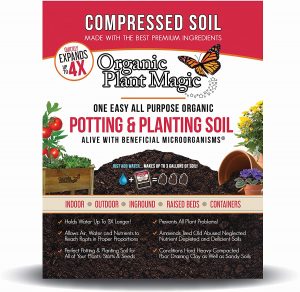Building Healthy Soil
Transform your compost into nutrient-rich soil with this three-step process. First, create the structure of the soil by adding organic matter like compost, mulch, and well-rotted manure. This will improve soil structure and provide essential nutrients for plants. Second, feed the soil with additional organic matter to maintain its fertility. Finally, protect the soil from erosion or compaction caused by rain, wind, or foot traffic.
If you’re trying to grow plants in soil that has been damaged by previous gardening practices, you may need to take extra steps to achieve healthy results. It can take several years to rebuild poor soil to an optimal level. One technique to consider is sheet mulching, which involves covering the ground with mulch rather than traditional digging. This can help build up organic matter in the top layers of the soil, even in areas that are difficult for worms to reach.
Even if you start with subpar soil and don’t want to put in extra effort, following these basic steps will still yield better results than using a commercial potting mix for seedlings. Remember, the key to building healthy soil in your garden is to minimize the use of chemicals and focus on enriching the soil itself.
Enhance the health of your garden soil by reducing or eliminating the use of pesticides and herbicides. These chemicals can harm beneficial microorganisms and plants, respectively, both of which are essential for healthy growth and protection against diseases and pests.
Composting is an excellent way to improve soil health, but it’s not the only option. Here are some steps you can take to start small:
- Collect weeds and grass clippings in a bag, box, or another container outside until it’s about two-thirds full.
- Add this material to a compost pile.
This process has several benefits:
- It reduces the number of weeds and grass growing in your garden, freeing up space for vegetables.
- As the grass decomposes, it provides nutrients for your plants instead of relying on fertilizers.
- Building healthy soil with organic matter from a compost bin helps maintain a consistent source of materials for enriching your soil.
In addition to improving soil health, composting also keep kitchen scraps out of the trash and reduces unpleasant odors in garbage cans.

To create the best compost, locate your pile in a shaded area away from foot traffic and rotate it every few weeks to prevent it from fully maturing before use. For efficient use of your time, consider making multiple batches at once using a variety of organic materials. Some materials decompose faster than others.
Healthy soil has numerous benefits, including increased fertility, improved moisture retention, reduced pest and weed growth, and self-fertilization through the decomposition of organic matter such as grass clippings and mulch. It’s also easier to work with for both you and your plants.
Regardless of the type of plants you wish to grow, their success depends on the quality of the soil in which they are planted. To build healthy soil for a vegetable garden, flower garden, or sod lawn, follow these basic steps:
- Turn over the soil at least once a year and add as much compost or other organic matter as possible. This process exposes the soil to air and light, allowing roots to grow and breaking down organic matter to provide nutrients for the plants.
- Turning over the soil also helps prevent erosion by allowing air and water to reach the ground instead of allowing wind or rain to carry away topsoil. It also increases oxygen in the soil, which is beneficial for roots and helps control weeds by depriving them of food and exposing them to sunlight, which they don’t thrive in.
The soil that is turned over has fewer weed seeds left over from the previous season, and many of those seeds have been killed by the process. Any weeds that do germinate are easy to remove because they haven’t developed deep roots yet. To ensure the health of your soil and plants, be sure to turn the soil at least once a year.
As a gardener, you can easily build healthy soil and grow nutrient-rich food by utilizing three basic tools: soil cultivation, composting, and mulching. Soil cultivation involves a variety of techniques such as digging, plowing, rototilling, disking, cultivating, and chopping to increase air circulation in the soil and prepare it for planting. If you find that your garden soil is compacted, try using a broadfork or garden fork to break up the compacted layers in the top 6 inches of soil. Avoid working the soil when it is wet, as the spaces between soil particles will shrink, making it more difficult for air to penetrate later in the season.
To further improve soil drainage and aeration, use a moldboard plow or similar tool to create a long trench or furrow in your garden bed. This will loosen compacted layers of clay soil and allow for the addition of organic matter, such as carbonaceous materials like leaves or straw. You can also broadcast grass clippings or plant debris over the soil to improve its structure and fertility.
To build healthy soil in your garden, you need three key elements: quality soil, organic matter, and minerals. Starting with good soil is essential for creating healthy soil. Adding organic matter, such as compost, helps improve soil fertility and increase its water-holding capacity. Minerals ensure that plants have access to necessary nutrients at all times. By incorporating these three elements, you can create a thriving, nutrient-rich environment for your plants.


